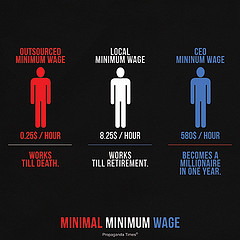Along with the national release of Dear White People earlier this month, PBS recently debuted a series with a unique take on US race relations called The Whiteness Project. Citing a lack of critical examination of whiteness and white identity as its motivation, the program conducts one-on-one interviews with white Americans “from all walks of life and localities.” In part one of the series, participants from Buffalo, NY are shown responding openly, sometimes jarringly, to questions about race, whiteness, and white privilege. Whitney Dow, the producer/director of The Whiteness Project, claims that through these interviews, the project hopes to examine “both the concept of whiteness itself and how those who identify as ‘white’ process their ethnic identity.”
Scholars from numerous disciplines have written thoughtfully and critically about Whiteness and how it pertains to U.S. race relations. Matthew M. Hughey and Matt Wray, both TSP contributors, have also written on the subject.
- George Lipsitz. 2006.The Possessive Investment in Whiteness: How white people profit from identity politics. 2nd ed. Philadelphia: Temple University Press.
- Monica McDermott. 2006. Working-Class White: The Making and Unmaking of Race Relations. Oakland, CA: University of California Press.
- David Roediger. 1999. The Wages of Whiteness: Race and the Making of the American Working Class. Brooklyn: Verso Publishing.
- Matthew W. Hughey. 2012. White Bound: Nationalists, Antiracists, and the Shared Meanings of Race. Stanford University Press.
- Matt Wray. 2006. Not quite white: White trash and the boundaries of whiteness. Durham: Duke University Press.

